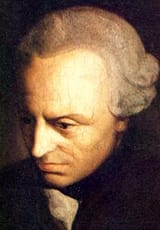Search Results
6/20/2025, 6:14:25 AM
6/19/2025, 5:18:39 PM
After poetry, if we are to deal with charm and mental movement, I would place that art which comes nearest to the art of speech and can very naturally be united with it, viz. the art of tone. For although it speaks by means of mere sensations without concepts, and so does not, like poetry, leave anything over for reflection, it yet moves the mind in a greater variety of ways and more intensely, although only transitorily. It is, however, rather enjoyment than culture (the play of thought that is incidentally excited by its means is merely the effect of a kind of mechanical association); and in the judgement of Reason it has less worth than any other of the beautiful arts. Hence, like all enjoyment, it desires constant change, and does not bear frequent repetition without producing weariness. Its charm, which admits of universal communication, appears to rest on this,218 that every expression of speech has in its context a tone appropriate to the sense. This tone indicates more or less an affection of the speaker, and produces it also in the hearer; which affection excites in its turn in the hearer the Idea that is expressed in speech by the tone in question. Thus as modulation is as it were a universal language of sensations intelligible to every man, the art of tone employs it by itself alone in its full force, viz. as a language of the affections, and thus communicates universally according to the laws of association the aesthetical Ideas naturally combined therewith. Now these aesthetical Ideas are not concepts or determinate thoughts. Hence the form of the composition of these sensations (harmony and melody) only serves instead of the form of language, by means of their proportionate accordance, to express the aesthetical Idea of a connected whole of an unspeakable wealth of thought, corresponding to a certain theme which produces the dominating affection in the piece. This can be brought mathematically under certain rules, because it rests in the case of tones on the relation between the number of vibrations of the air in the same time, so far as these tones are combined simultaneously or successively. To this mathematical form, although not represented by determinate concepts, alone attaches the satisfaction that unites the mere reflection upon such a number of concomitant or consecutive sensations with this their play, as a condition of its beauty valid for every man. It is this alone which permits Taste to claim in advance a rightful authority over every one’s judgement.
Poetry is the highest art form in Kant’s hierarchy. Was he right?
Poetry is the highest art form in Kant’s hierarchy. Was he right?
Page 1

